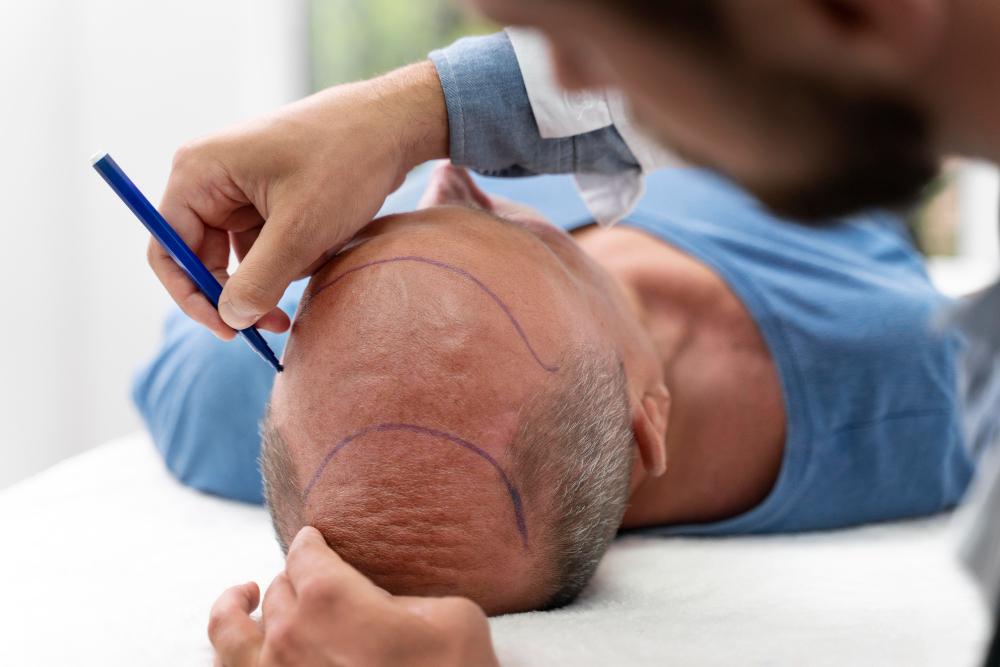All hairs on the human body are constantly undergoing four stages in a complex cycle. Hair that grows under the skin and is called a follicle extends from one root. All hair extending from one root goes through four different stages from the first time it starts growing to the time it falls out. These stages are; anagen, catagen, telogen and exogenous. In this article, we will talk to you about the telogen phase of the hair cycle.
Contents
What is Telogen Effluvium?
There are some stages of our hair growth, such as resting and growing out again. During these stages, our hair grows for several months, after which it recedes to rest for several months. After this process, it is observed that the hair falls out and comes out again. It is normal for a normal person to lose 100 strands of hair that occur daily in his hair. This hair loss is a routine and normal state in the hair growth cycle and lasts for about three months. Telogen is the name given to the resting phase of hair in the hair growth cycle. Telogen effluvium, on the other hand, is the name given to the transition of hair follicles to the early resting stage due to various factors and especially stress. There are a large number of different reasons for the occurrence of telogen effluvium. High fever diseases, giving birth to children, having a severe infection that overloads the body, or having severe chronic diseases are some of these. Particularly severe psychological stress exposure to undergo a major operation, thyroid problems and living with unhealthy diet and side effects from certain medications can also lead to hair loss.
What happens during telogen?
The telogen phase is the resting phase of the hair follicle. During the telogen, the third stage in the development of hair, the resting hair remains in the follicle. This condition continues until a new anagen hair grows and is pushed out. This stage lasts 3 months for hair and much longer for hair on other parts of the body. It is known that at any given time, 10 percent of all hair is in the telogen phase, and this is a cycle.
During the telogen phase, the hair follicle is completely at rest. This resting phase causes the club hair to grow and fully form. After pulling a hair that is growing during telogen, it will cause a hard and white image to form at the hair root.
Different Type of Telogen
Telogen effluvium can occur in two different types, known as acute or chronic. Acute telogen effluvium is a condition of hair loss by hand. It is a reactive hair loss condition that usually occurs three to four months after a triggering factor. At this time, up to 70% of the hairs on the scalp are shed. If the hair loss problem persists for at least six months, this condition is considered chronic and is called chronic telogen effluvium. The reason is mainly hormonal causes. In recent years, metabolic problems, environmental factors and eating habits can also cause chronic telogen effluvium. It is less important than acute telogen effluvium. When experiencing this condition, it is observed that the hair does not grow and complains of a decrease in volume.
Symptoms
The most common symptom associated with Telogen Effluvium is hair loss. If there is a noticeable amount of hair loss when washing hair or combing with a comb, it can be considered that there is telogen effluvium. Although it is a healthy-looking scalp, general deceleration of the hair, temporary hair loss, and dry, lifeless and unhealthy hair appearance can also be considered among the symptoms of telogen effluvium. In addition, if the hair colour changes from dark to brown or red, or changes from brown to yellow, there are signs of telogen effluvium.
Causes to choose:
The main causes of telogen effluvium are childbirth. Hair loss after childbirth can improve after a few months. Telogen effluvium experienced due to an acute or chronic disease can be seen even more severely, especially in febrile diseases. Undergoing a surgical operation, being exposed to an accident, experiencing intense psychological stress are also among the causes of telogen effluvium. Telogen effluvium can also occur due to rapid and excessive weight loss, long-term diets or nutritional deficiencies, diseases that will cause iron deficiency, and some medications used. In addition, telogen effluvium problems are encountered as a result of experiencing jet lag as a result of long-term air travel, scalp diseases, and prolonged excessive sun exposure.
How is telogen effluvium treated?
To treat the problem of telogen effluvium, it is first necessary to remove the problem that caused it from the body. In addition to eliminating problems in the body, it is also important to complete the deficiencies. Problems such as scalp problems, hormonal problems, thyroid disease should be treated. Zinc, folic acid and B12 deficiencies in the body should be tried to be completed by supplementing with vitamins or changing eating habits. Lotions and creams recommended by specialized doctors in hair clinics can be used to help with treatment. In addition, mesotherapy or platelet-rich plasma application are also some of the treatment methods that work well in telogen effluvium hair loss. If you are interested in the most suitable method for you, it will be useful to discuss it with the Rehair Istanbul authorities.













